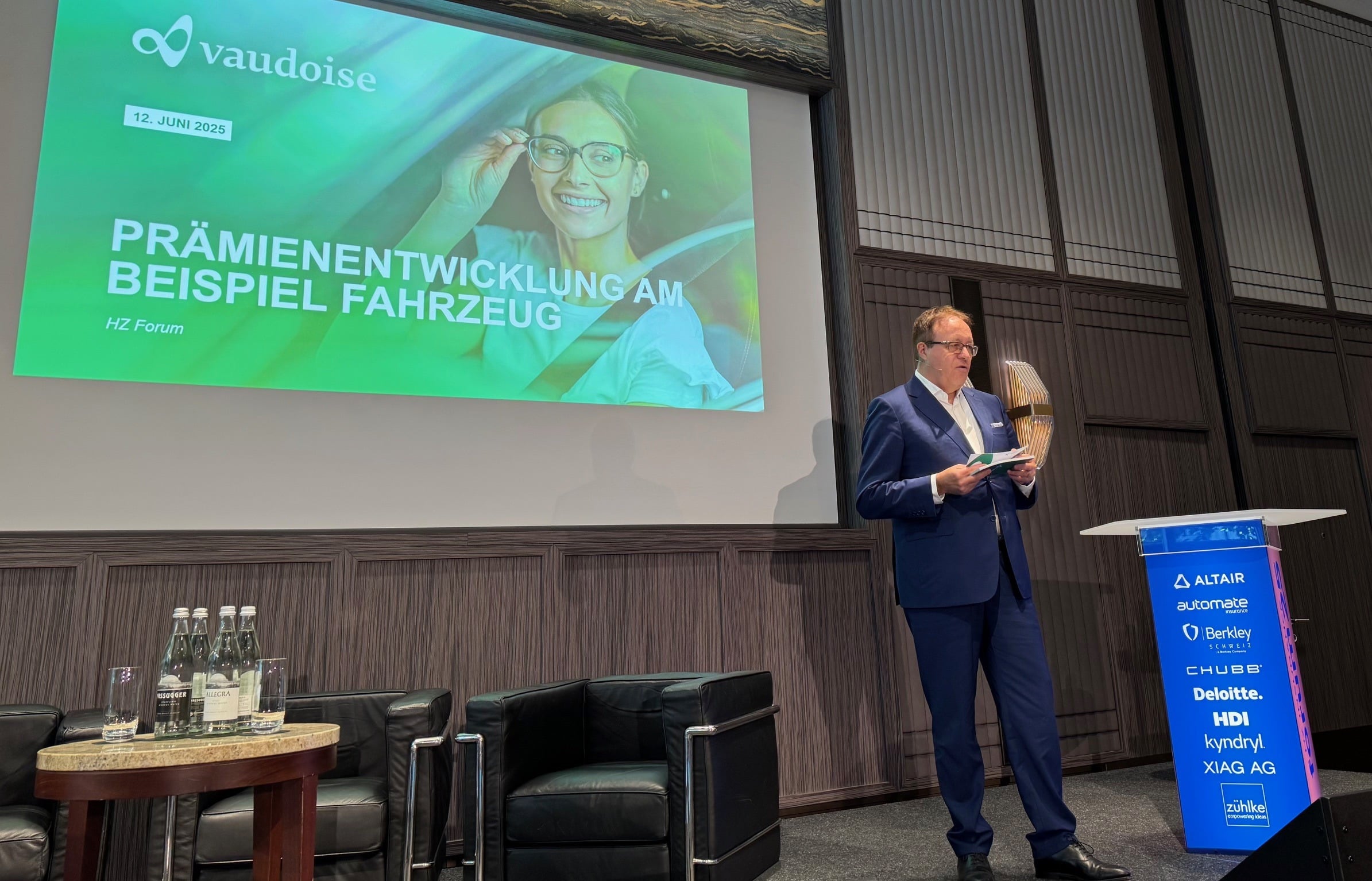Between customer demands and the AI revolution
23 June, 2025 | Current General
High-priced repairs, autonomous vehicles, data-based optimization: the insurance industry is under double pressure. On the one hand, customer expectations of price fairness and service are rising, while on the other, AI is becoming the strategic control center. Several CEO perspectives from an industry in transition .
Jean-Daniel Laffely, CEO of Vaudoise, described an impressive example at the HZ Insurance Forum 2025: an electrified Porsche with seemingly minor damage ends up with a total loss of the battery. Diagnosis by the manufacturer: mandatory replacement. Cost: 70,000 francs. “We’re talking about completely different dimensions today,” says Laffely. This cost explosion not only affects luxury vehicles, but also shows how damage patterns are changing with electromobility.
Supplier problems, CO2 legislation and rising repair prices are also contributing to the cost pressure. The CEO spoke of a “paradigm shift since 2021”. A key challenge is that the price structure can no longer be explained to customers. “Why should a customer with ten years of no claims pay more?”
New customer expectations: More service, less intransparency
Vaudoise is meeting these challenges with a holistic customer strategy: “Customer loyalty is not just about premiums, but about the entire customer experience,” says Laffely. In concrete terms, this means digital services, transparent communication, active loyalty management and, above all, an individual customer approach.
He calls for an end to the milquetoast mentality: “We have to stop just delivering bad news. Insurers should act as partners, not just as cost drivers.”





AI as a strategic operating system
A further discussion with the CEOs of Helvetia, CSS and Calvin Risk, as well as the Chief Data, AI and Innovation Officer of AXA, showed how this can be achieved. It became clear that artificial intelligence is no longer a tool, but an infrastructure. Dr. Andreas Schertzinger (AXA) put it this way: “We are talking about AI as a strategic operating system. It must be part of the entire value chain.”
AXA now has over 400 use cases running in the national companies. Efficiency potential is particularly evident in claims management: “25 years of experience can now be transferred into a learning model”. The task of management is to scale these systems in such a way that they work locally but are standardized globally.
Between attitude and infrastructure
Philomena Colatrella (CSS) emphasized the importance of corporate philosophy: “The attitude towards AI determines whether employees go along with it.” This is why the company is not only investing in technology, but also in culture and training. At Helvetia, Dr. Martin Jara also sees AI as a “cooperative process”, not a replacement.
The central challenge, according to the panelists, is strategic anchoring: “AI must not be a project. It must be a product that is constantly evolving.” This includes centers of excellence, data-driven decisions and internal change processes.
Customer experience as a common currency
Whether digital claims processing or preventive risk detection – the combination of customer perspective and AI is crucial. “AI only works if it brings benefits,” summarized the CEOs. The insurance industry of the future must deliver both: stable prices and smart experiences.
And it must have the courage to make transformation a top priority.
Binci Heeb
Read also: Between Hope and Implementation – Generative AI Promises Efficiency




